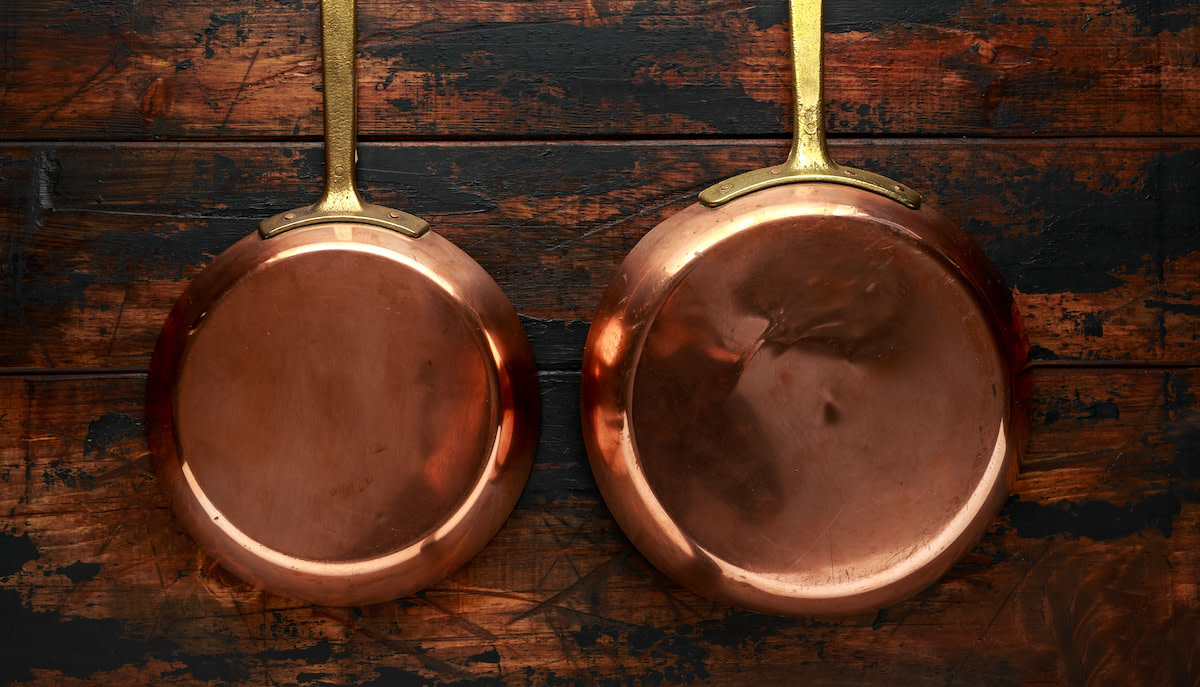How to Clean the Bottoms of Pans: 4 Easy Methods to Try
Written by MasterClass
Last updated: Jan 19, 2022 • 3 min read
Pan bottoms can build up with burnt food, scorch marks, grease splatters, and gunk—here’s how to clean the bottom of your pans.
Learn From the Best
5 Tips for Maintaining Your Pots and Pans
The best way to keep your pan clean is to maintain it well before buildup begins:
- 1. Keep your stovetop clean. Make sure your cooktop is free of food bits or grease before you start cooking—if it’s messy, this residue can transfer to the bottom of your pot and dirty it quickly.
- 2. Grease well before cooking. To keep the inside of your pan cleaner, grease it before you cook to create a nonstick surface and prevent food from sticking to the pan.
- 3. Clean soon after cooking. Allowing old food or spills to sit in or on the outside of your pan long after cooking will make them much harder to remove. Instead, clean your pan immediately after it cools using hot water and dish detergent. Wait for your pan to cool before adding cold water to clean it, as thermal shock can warp the shape of a hot pan.
- 4. Dry thoroughly with a towel. Residual water can leave behind hard water stains or rust, so dry your pan with a clean microfiber towel or dish towel immediately after washing it. You may want to use a rag or paper towel to dry cast-iron frying pans and other oily cookware. Learn how to clean a cast-iron skillet.
- 5. Store in a clean, dry place. Store your pan somewhere where it can remain dry and clean, like a cupboard. Store pans that you frequently use on a pegboard or hanging rack, but avoid storing pots and pans on the stovetop where they can get splattered by grease and food.
How to Clean the Bottoms of Pans
There are many different methods for cleaning the bottom of pans—choose the one that’s right for the material of your cookware. Before trying a new cleaning method, always test it on a small area before applying it to the entire bottom, in case the technique causes discoloration or wears away the material. Here are four DIY methods to try, from most to least common:
- 1. Use baking soda for most pan types. Baking soda is a mild abrasive that works well with any type of pan, including stainless steel pans, cast-iron pans, ceramic pans, and even the outside of nonstick pans. (Be careful not to get baking soda on the nonstick surface since it can damage the coating). To clean your pans with this method, mix three parts baking soda with one part warm water to form a paste. Spread the paste along the bottom of your pan and let it sit for ten to twenty minutes. Then, use a nonabrasive scrubber, toothbrush, or sponge to scrub away the baking soda—ideally removing the caked-on grease with it. To amp up the baking soda method, add a little dish soap to the paste, or add some white vinegar while scrubbing.
- 2. Try salt for cast iron and copper. Salt is a popular cleaning method for cast-iron and copper-bottomed pans, though it also works for stainless steel. For this method, sprinkle coarse salt over the bottom of the pan, then use a soft-bristled scouring pad or scrubber brush to work the salt into the food residue. For a more robust cleaner, add a little bit of baking soda to the salt and then spray vinegar over the top, letting it sit for ten minutes before you begin scrubbing.
- 3. Use a mild acid for copper and stainless steel. For copper, ceramic, or stainless steel pans, a mild acid—like lemon juice, lime juice, white vinegar, or even tomato paste or ketchup—can help break down stubborn stains and grease spots. To use acid to clean a burnt pan, soak the pan bottom in the acid for ten minutes. Then, use a nonabrasive scrubbing pad to work the acid into the stains and break them down.
- 4. Try commercial cleaners. There are many commercial cleaning agents available to help clean pan bottoms. If DIY cleaning methods aren’t helping with your caked-in burnt grease and grime, look for a cleaner with oxalic acid, and follow the directions on the packaging. Avoid using steel wool, oven cleaner, or other high-intensity products, which can damage your pan.
Want to Learn More About Cooking?
Become a better chef with the MasterClass Annual Membership. Gain access to exclusive video lessons taught by the world’s best, including Gordon Ramsay, Gabriela Cámara, Chef Thomas Keller, Dominique Ansel, Yotam Ottolenghi, Alice Waters, and more.
